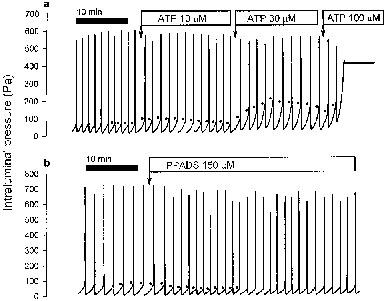Figure 1.

Recordings of the action of ATP (a) and PPADS (b) on peristalsis. The drugs were administered to the organ bath at the indicated concentrations. The ATP-induced inhibition of peristalsis manifested itself in a rise of the peristaltic pressure threshold (PPT, indicated by dots), which at the concentration of 100 μM resulted in complete shutdown of peristalsis. PPADS caused a sustained stimulation of peristalsis as deduced from its effect to lower PPT.
